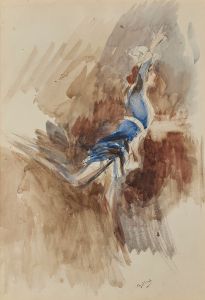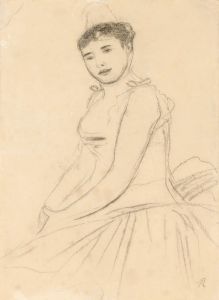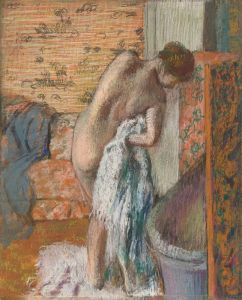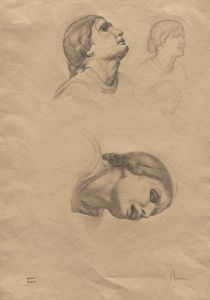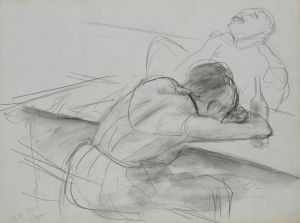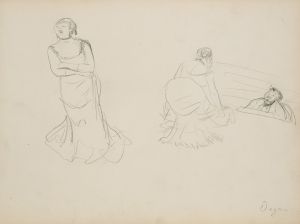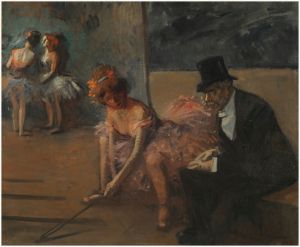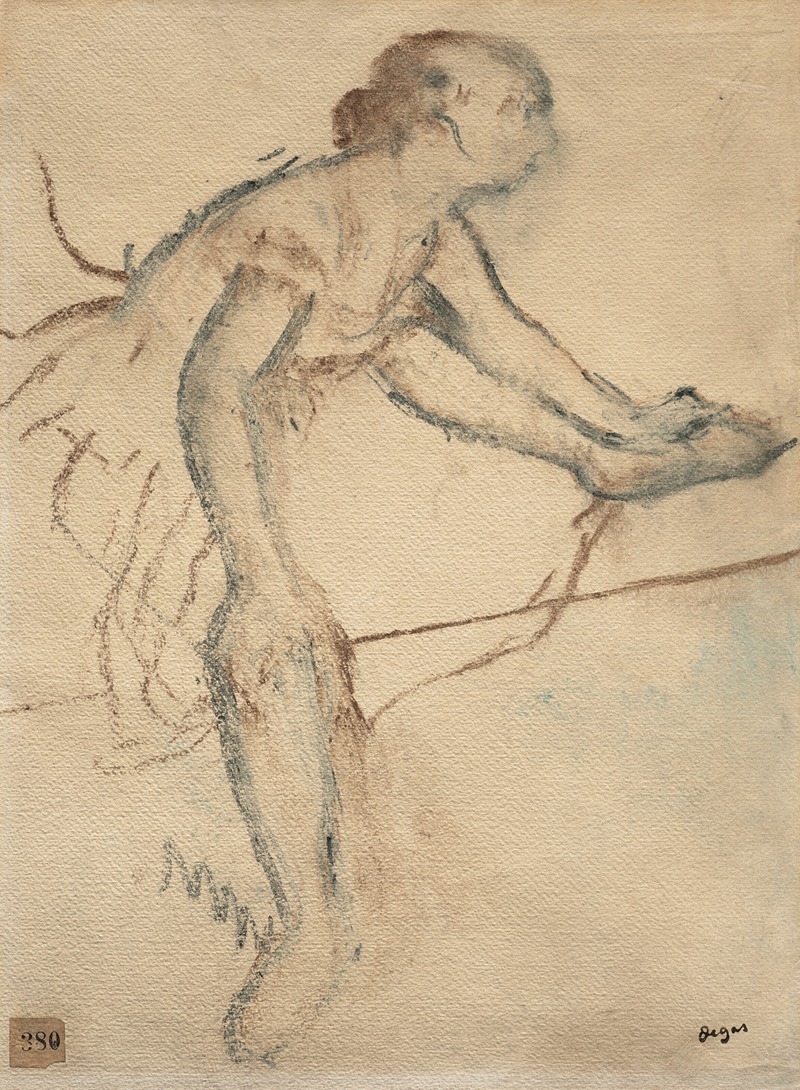
Danseuse assise
A hand-painted replica of Edgar Degas’s masterpiece Danseuse assise, meticulously crafted by professional artists to capture the true essence of the original. Each piece is created with museum-quality canvas and rare mineral pigments, carefully painted by experienced artists with delicate brushstrokes and rich, layered colors to perfectly recreate the texture of the original artwork. Unlike machine-printed reproductions, this hand-painted version brings the painting to life, infused with the artist’s emotions and skill in every stroke. Whether for personal collection or home decoration, it instantly elevates the artistic atmosphere of any space.
Edgar Degas, a prominent French artist associated with the Impressionist movement, is renowned for his depictions of dancers, capturing their grace, movement, and moments of quiet introspection. One of his works, Danseuse assise (translated as Seated Dancer), exemplifies his fascination with the world of ballet and his innovative approach to composition and technique.
Danseuse assise portrays a ballet dancer seated in a moment of rest or contemplation. The artwork reflects Degas's deep interest in the behind-the-scenes aspects of ballet, focusing on the dancer's private, unguarded moments rather than the grandeur of performance. This perspective was a hallmark of Degas's work, as he sought to depict the labor, discipline, and humanity of dancers, rather than idealized or romanticized visions of their art.
The medium of Danseuse assise is pastel, a material Degas frequently used, particularly in his later years. Pastels allowed him to achieve vibrant colors, soft textures, and dynamic layering, which are evident in this piece. The dancer's pose, with her body slightly turned and her head tilted, conveys a sense of naturalism and spontaneity. Degas's skillful use of line and color emphasizes the contours of the dancer's form, while the background is often rendered with minimal detail, drawing attention to the figure.
Degas's interest in ballet was not merely aesthetic but also rooted in his desire to explore movement and the human form. His works often depict dancers in rehearsal, at rest, or preparing for a performance, offering a glimpse into their daily lives. This focus on the working aspects of dance was unusual for his time, as many artists preferred to portray dancers in idealized or theatrical settings.
While the exact date of Danseuse assise is not definitively known, it is consistent with Degas's broader body of work from the late 19th century, particularly the 1870s and 1880s, when he produced many of his iconic ballet-themed pieces. The painting is part of a larger series of works in which Degas explored similar themes, often revisiting the subject of seated dancers in various poses and settings.
Today, Danseuse assise is celebrated as an example of Degas's mastery of pastel and his ability to capture the subtleties of human posture and emotion. It remains a testament to his innovative approach to art and his enduring fascination with the world of ballet.





